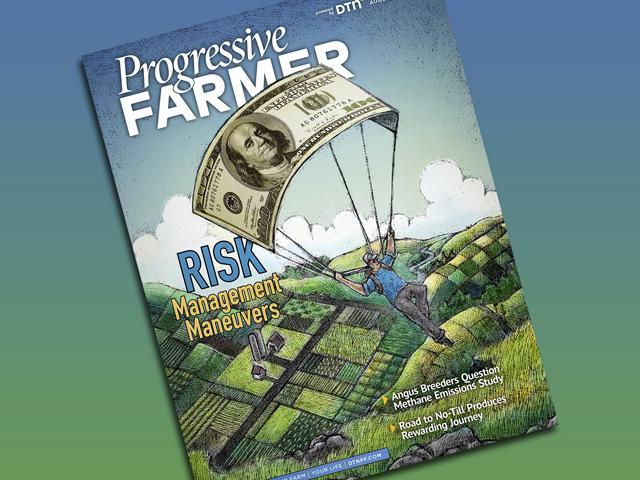Designer Crops
Gene Revolution Turns 25 - Designer Crops
Tom Oswald got chills the first time he heard about CRISPR technology. It was 2015, and the Cleghorn, Iowa, farmer immediately began to dream of genetically engineered soybeans that would address white mold -- a periodic problem on his farm -- as well as other disease and pest problems.
CRISPR stands for clusters of regularly interspaced short palindromic repeats. It's just one of several gene-editing tools -- ranging from GM (genetically modified) techniques to technologies that engineer enzymes to cut specific sequences of DNA -- changing crops of the future.
It allows researchers to precisely find and alter DNA sequences inside a cell or modify gene function by turning them off and on without altering their sequence. CRISPR can transform plants to make them more resilient and productive, and correct genetic defects, among other things.
The key to CRISPR is the multiple types of "Cas" (CRISPR-associated) proteins found in bacteria that can be programmed to act like a pair of molecular scissors, capable of precisely cutting strands of DNA within the same species. (In comparison, GM technology cuts and pastes genetic material from one species into another. Since CRISPR isn't used to introduce foreign genes in a plant, some scientists argue it shouldn't fall under the same rigorous regulatory process as GM-derived plants.) The Cas9 protein is the most widely used by scientists, according to newscientist.com, which can be programmed to find and bind to almost any desired target sequence. This occurs by giving the enzyme a piece of RNA (ribonucleic acid) to guide it in its search.
Oswald, a corn and soybean farmer and United Soybean Board (USB) executive committee member, first heard about CRISPR during a presentation in 2015. USB contributed funds to map the soybean genome, an important step in using CRISPR to transform soybean plants. Oswald believes CRISPR will revolutionize agriculture, specifically grain and oilseed production.
"I will never forget that presentation on CRISPR; the flash bulbs went off in my head," he recalls. "I said, 'Wow, this is the equivalent of designer crops in the sense of plant development.'
"Researchers will be able to figure out ways to mitigate evolving problems, such as with pests, much quicker by making a small, incremental change without breeding plants for a decade to correct it," Oswald continues. "That will reduce economic damage to farmers."
AGRICULTURAL USE
CRISPR is already an established tool for commercial seed companies' breeding efforts. Bayer Crop Science uses CRISPR technology to discover how genes work within plants and develop new commercial products.
P[L1] D[0x0] M[300x250] OOP[F] ADUNIT[] T[]
Jonathan Phillips, Bayer Crop Science head of weed and pest control research in plant biotechnology, says: "I don't see CRISPR playing a role so much in weed and pest control. I see it improving nutritional benefits of crops, industrial uses, altering crop architecture and improving crop efficiency and drought tolerance. Traits that are already intrinsic to the plant and making them better."
Corteva Agriscience considers CRISPR an evolution of breeding technology. The company's researchers use it to efficiently and effectively create new variations of crops that will be meaningful to growers, explains Tom Greene, global leader of trait discovery. The company is developing waxy corn lines using CRISPR.
He foresees improvement in crop production, disease resistance, stress tolerance, output traits such as protein content and plant resilience because of CRISPR. Cas9 is the company's "workhorse" protein when utilizing the technology.
To develop new variations of disease-resistant crops, for example, Corteva scientists often leverage dominant disease resistance from tropical (South America) germplasm and cross the improved resistance into temperate (North America) germplasm. Greene says that's a hard cross to make, which takes a lot of time, energy and money to clean up backgrounds using traditional marker-assisted breeding processes.
"With CRISPR, we now have the ability to mine our deep sequencing knowledge of tropical germplasm, pull out a single gene that's driving disease resistance and precisely put it in the same location of the temperate germplasm," Greene says. "It allows us to create more efficient, high-performing products for growers faster."
Corteva has new products and traits generated by CRISPR in its development pipeline, but none have been commercially released.
Technology Helps Scientists Win Nobel Prize:
CRISPR was first discovered in 1987, according to the American Society for Microbiology. It was recently thrust into the spotlight when scientists Emmanuelle Charpentier, of Germany, and Jennifer Doudna, of the United States, won the 2020 Nobel Prize in chemistry. They discovered the CRISPR/Cas9 genetic scissors in 2012, which propelled use of the technology.
It's now possible to change the DNA of plants, animals and microorganisms with extreme precision over the course of a few weeks, Nobel officials proclaim.
"There is enormous power in this genetic tool, which affects us all," says Claes Gustafsson, chair of The Nobel Committee for Chemistry, in a press release. "It has not only revolutionized basic science but also resulted in innovative crops and will lead to ground-breaking new medical treatments."
CRISPR and Seed Chipping:
CRISPR and seed chipping go hand in hand when it comes to developing new seeds and traits, explains Jonathan Phillips, head of weed and pest control research in plant biotechnology for Bayer Crop Science.
Seed chipping involves slicing off a tiny piece of an individual seed -- mostly corn, soybeans, cotton and vegetable crops -- to undergo DNA analysis. The seed remains viable so it can be grown in breeding trials.
As new crop variants are created via CRISPR, chipping allows researchers to analyze the variation in the seed to determine whether it should be field tested.
"Seed chipping allows us to track [genetic] changes efficiently," Phillips says.
For More Information:
> www.cropscience.bayer.com
> www.corteva.com
[PF_021521]
(c) Copyright 2021 DTN, LLC. All rights reserved.




